
Dedication in The Haunted Woman
Most of what we know about the family and background of David Lindsay’s wife, Jacqueline Silver, comes from Bernard Sellin’s Life & Works of David Lindsay, where he writes:
“Jacqueline’s father… died young, worn out by financial worries, leaving behind him a widow of twenty-seven, with seven children. Three of these died young, while four survived; Jacqueline, and three boys who later emigrated to the United States, taking their mother with them.”
— The Life & Works of David Lindsay by Bernard Sellin, p. 20
Sellin also notes that Jacqueline’s mother “was French in origin”,[1] and uses this fact to speculate that Lindsay’s 1926 novel, The Adventures of Monsieur de Mailly, which is set in early 18th century France, was probably “as much the work of Jacqueline as of David”.[2] (Gary K Wolfe, though, notes that Lindsay liked to read “personal memoirs of the eighteenth century.”[3] For a “pot-boiler”, it has a lot of historically accurate details.)
It’s certain Lindsay’s work owes a great deal to his wife, in terms of support and intellectual stimulation, as Sellin and J B Pick (who corresponded with her) say that she was a lively, intelligent woman who was not afraid to speak up.[4] It was, in fact, this latter point that first attracted Lindsay to her, as Sellin says:
“More than anything else, Lindsay admired the way in which she would stand up in the literary club [at which they met] to speak with great gusto, and hold her own with men.”
— The Life & Works of David Lindsay by Bernard Sellin, p. 18
And, as Pick says:
“Without her enthusiasm and insistence, [Lindsay] might never have attempted to get his ideas into book form.”
— The Great Shadow House by J B Pick, p. 75
While researching genealogical records for my article on David Lindsay’s family background, I also tried to find out more about Jacqueline, but at first drew a blank, finding no record of her till her marriage to David in 1916. Mindful of that French origin, and wondering if she hadn’t been born there herself, I checked French genealogical databases, but couldn’t find anything there either. Recently, though, taking a more inventive tack, I finally did track her down, along with the primary reason I hadn’t located her before: in the 1911 UK Census, where she’s living at the same address she gives in the 1916 marriage record (23 Princelet Street, Bishopsgate), her name is Jacqueline Silverman.
This finally opened up my research, and the story that emerges of Jacqueline’s family is a fascinating glimpse of people caught up in some of the tumultuous historical forces that governed so many lives in the late 19th and early 20th centuries.
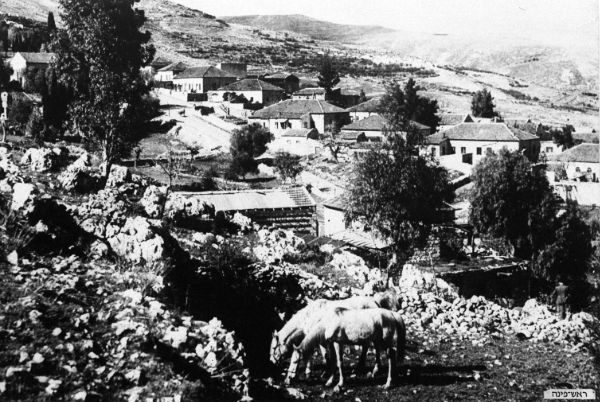
Rosh Pinna in the late 19th century
Jacqueline’s father is named as “Bernetictus” on her marriage record, but gets a different name on each of the marriage records of his three surviving sons: he is either “Benadict”,[5] “Baruch”,[6] or “Bernard”.[7] (Of these records, the one with “Baruch” on it is the most verifiably tied to the family at 23 Princelet Street, thanks to detailed US Naturalization and immigration records. And, as I haven't seen all the original records, there may be transcription errors involved, too.) It’s from the three brothers’ entries in the 1920 US Census[8] that we learn their father was a Yiddish-speaking Russian. On Jacqueline’s marriage certificate, he’s described as being of “independent means”.
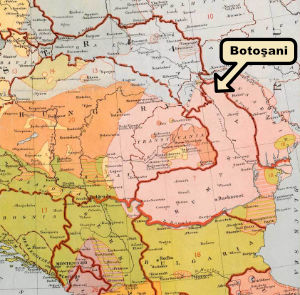
Botoşani, Romania, on a 1916 War Office Ethnographic Map of Central and South Eastern Europe
Jacqueline’s mother, sometimes called Yetta, sometimes Yetty (and her maiden name is given three different ways in her sons’ three marriages: Wexler, Weshster, and Wechsler), was born not in France but in “Battasani, Rumania”.[9] (The “origins” in Sellin’s account may of course refer to her own parents, or before.) “Battasani” is Botoşani, the capital of Botoşani County in northern Moldavia, Romania, close to the border with modern-day Moldova and Ukraine (but when Yetty was born, close to the borders with Bukovina in the Austro-Hungarian Empire, and Bessarabia in the Russian Empire).
The first of Benadict and Yetty’s children I can find record of is Charles Silverman, born in 1888 or 1890, in “Rozch Pena, Palestine”,[10] or what is now Rosh Pinna, Israel.
Rosh Pinna was founded around the smaller Jewish settlement of Gei Oni in Ottoman Palestine. In 1882, its existing three-family population was boosted by thirty more Jewish families from Romania and Russia,[11] as part of the First Aliyah, at a time when anti-semitic persecution in Russia was on the rise. (Tsar Alexander III, taking to the throne in April 1881, used the assassination of his predecessor to foment anti-semitic riots throughout the country, as well as introducing persecutory legislation such as the May Laws, creating mass homelessness among Russia’s poorest Jewish people. Meanwhile, in Botoşani, 1879 saw anti-Jewish riots.[12])
Sellin says Jacqueline’s mother had seven children in all, four of whom survived to adulthood, but the 1911 UK Census records her as having had eight, two of whom had died. I’ve been able to find names for five in all: Charles (born 1888 or 1890), David Leopold (born Christmas Day 1892 in Safed[13] — the closest city to Rosh Pinna), Solomon (born 1893 or 1894), Jacqueline (born 1898), and Bernard (born 1900[14]).
In the 1911 UK Census, three of these children were living with Yetty — Solomon, Jacqueline, and Bernard — and all three give their birthplace as Shadwell in London. (Shadwell, an East-End dockside area, was home, at the time, to a large, and often poor, immigrant populace. It’s part of the district of Stepney, where the Silverman family lived throughout their time in London.) However, when Bernard travels to the US, both on immigration records[15] and the 1920 US Census, he gives his birthplace as Palestine. (It’s definitely the same Bernard Silverman, as he names Yetty Silverman of 23 Princelet Street as his mother.) Which of these two, then, is correct? Without an actual birth record, it’s impossible to tell, but it seems more likely that “Shadwell, London” might have been given in the UK census to prevent his being considered an alien in the country, than that Bernard would subsequently adopt Palestine as a birthplace when entering the US, but I can’t be sure.
So, it’s at least a possibility, if not a likelihood, that Bernard was born in Palestine. If so, surely all the children between Charles and Bernard would have been born there — and that, then, would include Jacqueline.
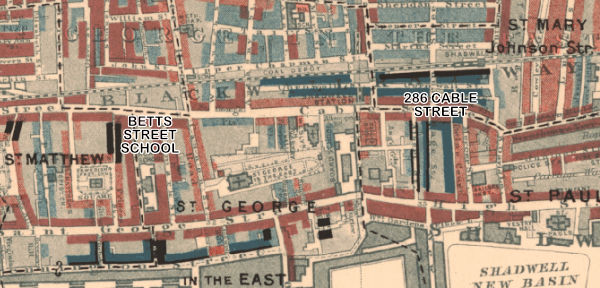
Where Jacqueline lived and went to school in 1907, as shown on Charles Booth’s 1903 Poverty Map of the area. Here, solid black represents areas populated by the "vicious, semi-criminal" classes; dark blue is "very poor"; light blue is "poor"; and the darker the red, the closer to middle-class the populace. (Click to enlarge)
In order to get the Silverman family story from Charles’s birth in Rosh Pinna to the 1911 UK Census, two things have to happen: they travel to the UK, and their father dies.
According to the account in Sellin quoted above, Jacqueline’s mother became a widow when she was 27. Yetty gives her age as 39 in the 1911 UK Census, putting her year of birth at 1871 or 1872. In her Statement of Intent to Naturalise as a US citizen, however, she gives her date of birth as 15th July 1866.[16] Either way, she would have been 27 between 1893 and 1899… But if her son Bernard was born in 1900 (and his birthday was in October), his father would need to have been alive at least at the start of 1900. Ages are often somewhat off in these records (Jacqueline’s birth year being given as 1898 mostly, but 1899 in the 1939 Register,[17] for instance), but Jacqueline’s father’s death seems to have occurred on or before the turn of the century, when she herself would have been only 2 or 3 years old.
As for travelling to the UK, the earliest record I have for the Silverman family definitely being in the country is from February 1903, when Solomon is enrolled at the Dempsey Street School in Stepney.[18] His parent’s name is Yetty (so Benadict has certainly died by this point), and they are living at 11 Gateshead Place, Mile End (which no longer exists, but was just off the Mile End Road).
In 1907, it’s the 9-year-old Jacqueline’s turn, this time to be admitted to the Betts Street School, St George in the East.[19] At the time, the family’s address is given as 286 Cable Street (which is not far from where both Arthur Conan Doyle and Oscar Wilde visited opium dens — one for research, one for recreation[20]). Betts Street School was opened in 1884, with capacity for 300 boys, 300 girls, and 386 infants, most of whom were Jewish.[21]
(There’s a telling quote from the headmaster of the Betts Street School, giving some idea of what was perhaps taught to immigrants at the time in terms of what was expected of them. Interviewed as part of the 1902 Royal Commission on Alien Immigration, which led to the formulation of the UK’s 1905 Aliens Act, he said, of the predominantly Jewish boys he taught, that they “seem to be very proud to believe that they will become English. If you speak to the boys the general idea is that once they are here they mean to try and be English in everything.”[22])
The previous year, 1906, Yetty had passed the exams of the Central Midwives Board, and was now listed on its UK Midwives Roll.[23] This is the profession she gives in the 1911 UK Census. Her name can also be found in Kelley’s Directory for London, Commercial section, in 1914, as a midwife, but it’s in the UK Midwives Roll for 1910 that I find the first mention of her living at 23 Princelet Street, Bishopsgate, the address she’d stay in till she leaves the UK in 1919.
23 Princelet Street became a Grade II listed building in 1950,[24] and has been preserved as it was at that point. It has a shopfront (and it would be interesting to know if that was there when the Silverman family lived there). Skip along to number 19 and you come to what is now the Museum of Immigration and Diversity,[25] but in Yetty’s time housed the local synagogue. Also at the time of Yetty’s residence, 23 Princelet Street was the address of the Executors of Henry Pigé Leschallas (1833–1903),[26] who became a wealthy man upon inheriting the estate of his brother, the successful builder William Leschallas. William was based on Princelet Street (or Prince’s Street, as it was, then). This was, perhaps, just a receiving address. (See “The Leschallas Family at Valley End” for more on Leschallas.)
What emerges out of these bare facts is that Yetty, now a widowed, working mother, is slowly but surely bettering her and her children’s lives. She ensures her children are educated, and gains official recognition for her skill as a midwife. The general story about immigrants living in the East End of London at the time often paints a picture of large families crowded into single rooms, but the house Yetty and her children end up in (after, it seems, many changes of address) is listed as having four rooms (which doesn’t include functional rooms such as kitchen or bathroom) between the five of them. Plus, by this time Yetty can afford a domestic servant, something of an essential among the Edwardian middle classes.
Everything is looking up. Just in time for the First World War.
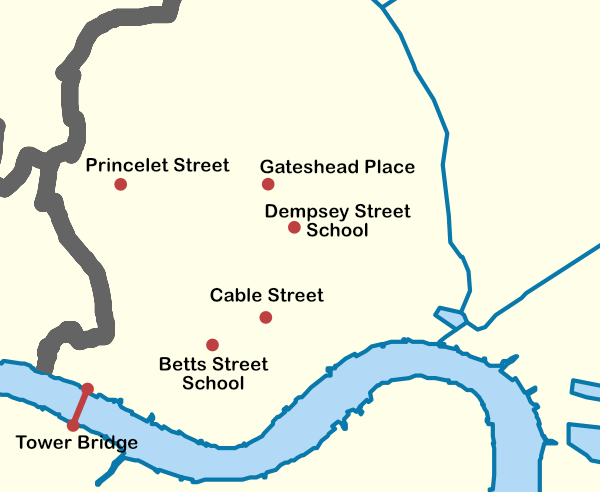
Silverman home & school locations in Stepney, London
The next census-milestone for Jacqueline’s family is the 1920 US Census, which finds Yetty and three of her sons — Charles, David, and Bernard — living in apartment 314 at 1028 Simpson Street, The Bronx, New York. The three men (aged 30, 28, and 19 by now), are all listed as salesman of provisions, and not yet naturalised US citizens.
Records at Ellis Island note their arrival. Charles came first, in November 1911.[27] Then David, in September 1914, citing his brother “Chas” as the person he’s going to stay with.[28] Finally there’s Bernard, only 16 at the time, in July 1916 (who, confusingly gives his nationality as Russian, but cites his mother, Yetty Silverman in 23 Princelet Street, as his relative, and his place of birth as — if I’m reading the handwriting correctly — Rosh Pinna, Palestine). I haven’t yet been able to find out what happened to Solomon. (He was, of course, of call-up age when the Great War began, so it’s quite possible he was killed in service.)
By leaving in the middle of 1916, Bernard missed his sister Jacqueline’s wedding by five months, though likely didn’t know at the time it was going to happen. Jacqueline had been engaged to a friend of one her brothers. This man died in the War, and she met David Lindsay while recovering from the shock.
She and David married on December 21st, in Godstone in Surrey (only 9 miles from Brasted, where Lindsay set the bulk of his novel The Violet Apple). At the time, David was still in the army, and his service records reflect this change in his life, with his mother’s name and address being crossed out as next-of-kin and replaced by “Jacqueline Silver”, and this further amended to “Jacqueline Lindsay” when they marry.[29] Beneath this are two further addresses, presumably where Jacqueline was staying while he continued to serve in the army, and neither is 23 Princelet Street. The first is 22 Courtfield Gardens in Earl’s Court. Judging by the 1911 UK Census, this was some sort of educational establishment catering to foreign students (there are people from France, Germany, and other countries there), presided over by one Francis Ernest Thomas, a tutor, and his wife. (Its use may well have changed during the war.) That address is also crossed out, though, and replaced by a house in Park Drive, Golders Green. When Lindsay leaves the army, his address is Ruberslaw, Finchley Road, Golders Green.[30] (And as Rubers Law is a hill near Jedburgh, the home of David’s Scottish relatives, I wonder if he named this house himself.)
Yetty left for the US in October 1919, on board the SS Lapland, and entered the country on the 3rd of November.[31] On the same ship, her son Charles is listed as a waiter. (He can be found on a number of ships’ records throughout that decade, as a waiter. After his marriage, he’s a waiter in a restaurant.)
Charles married Sadie Leavy in 1921. David and Bernard both married in 1928 — in fact they married sisters, Bertha and Fannie Schlefer. I haven't followed their story much further, except to note that Bernard had a son in 1930 and named him Benedict, presumably after the boy’s grandfather.
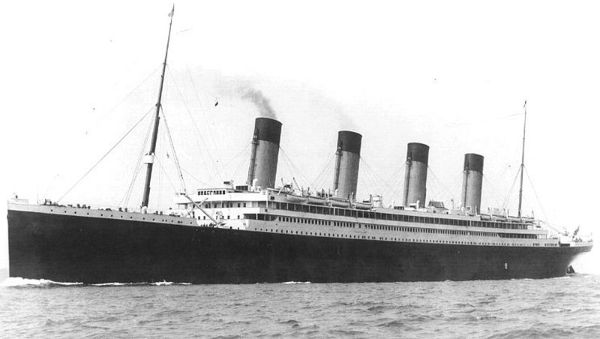
RMS Olympic
After her marriage, Jacqueline made two trips to the US, in both cases citing her mother as the person she was visiting… But never as Yetty Silverman.
The first trip is in 1921, and seems to have got off to a false start. Jacqueline, and her (then) only daughter Diana (born in 1919), are on the passenger lists for the RMS Cedric, sailing from Liverpool on the 25th June. Both names, however, are crossed out, and Jacqueline and Diana appear again on the passenger lists for the RMS Olympic, sailing from Southampton on the 6th July, and arriving in the US on the 13th.
The second trip is in September of 1924, this time with Jacqueline and her two daughters, Diana and Helen, now aged 5 and 2½, arriving in the US on the 3rd of October. They return to the UK on January 3rd the following year.
There are a couple of things to note about these trips. One is that David Lindsay himself doesn’t go. (Lindsay finished his second novel, The Haunted Woman, in April of 1921,[32] a few months before his wife set off on her first trip. That novel is dedicated to his wife and, oddly enough, begins with an engaged couple being reunited after one returns from visiting the US.)
Another thing to note is that, as I said above, for each of the Ellis Island immigration records (and even the aborted trip gets one, though the Lindsays’ names are struck out), Jacqueline gives a slightly different name for her mother. In that June non-trip, it’s “Mrs J Silver” (with 1028 Simpson Street as her address, where Yetty Silverman appears on the 1920 US Census); in the July trip, it’s “Mrs Y Silva” (perhaps a transcription error on the part of the port official). Most perplexing of all, though, is the 1924 trip, where her mother’s name is recorded as “Mrs Yvonne Silver”. (Frustratingly, this was the first one I noticed, which sent me off to the French genealogical databases once more, fruitlessly.)
There are, anyway, other oddities on these records which are clear mistakes. On one outgoing UK passenger list, Diana Lindsay (then 2 years old) is given the name “Nellie” and an age of 5 years (though she’s grouped with her mother, and has the address of 17 Blackheath Rise, so this is Jacqueline Lindsay’s daughter); on the return trip she’s “Diana”, but her age is given as 10! I can only assume the UK port officials weren’t that interested in accuracy as far as children were concerned. (The US officials on the same trip get her age correct down to the month.)

It’s obvious that, if my researches are right, the story of Jacqueline and her family before she married David is a lot more interesting than the few details we have from the existing biographies.
One thing that’s obvious is that the Silverman family story is one of survival in the face of great difficulty. Yetty Silverman saw her children through hard times — the death of their father, entering and adapting to a foreign country (England), then moving to another (America). Jacqueline, I can’t help thinking, displayed the same practical competence when, in the 1930s, once her daughters had finished school in Worthing,[33] she took the family’s financial future in hand and started up a “boarding-house for convalescents”[34] in Hove.
She died in 1966, in Lewes,[35] though had been living in Seaford (both are near Brighton). There’s still more to know about her, though I’m sure her influence haunts the many resolute and dignified female characters in Lindsay’s fiction. One thing I would like to know more about, though, is the intriguing statement in Sellin’s book that David and Jacqueline’s “respective grandparents knew one another quite well”,[36] something that boggles my mind when I consider that all four of David’s grandparents — two in Scotland, two in Lancashire — were dead before Yetty Silverman was born in Romania, while Benadict/Bernetictus/Baruch/Bernard’s parents must have been in Russia…

Online databases

Footnotes
- 1^ — Sellin, p. 19
- 2^ — Sellin, p. 29
- 3^ — Wolfe, p. 11
- 4^ — See, for instance, Sellin, p. 18 & Pick, "Sketch", p. 10
- 5^ — Bernard Silverman marrying Fannie Schlefer, 3 Jul 1928, Manhattan, New York
- 6^ — David Silverman marrying Bertha Schlefer, 4 March 1928, Manhattan, New York
- 7^ — Charles Silverman marriage to Sadie Leavy, 4 Sep 1921, Manhattan, New York
- 8^ — Fourteenth Census of the United States: 1920—Population, 1028 Simpson Steet, apartment 314
- 9^ — Declaration of Intention to become a Naturalised Citizen of the US, for Yetta Silverman 3rd April 1925
- 10^ — States Immigration Officer Record, 3 Nov 1919 for Charles Silverman
- 11^ — The Jewish Virtual Library — Rosh Pina
- 12^ — See Encyclopedia Judaica: Botosani, Romania.
- 13^ — United States of America Declaration of Intention document (part of the Naturalization process), 16th July 1924. David completed the Naturalization process in 1928
- 14^ — 21st October 1900, in both his 1925 Statement of Intent to Naturalize as a US Citizen, and his 1971 Naturalization documents, when he finally completed the process.
- 15^ — States Immigration Officer Record, 8 July 1916 for Bernard Silverman
- 16^ — Declaration of Intention to become a Naturalised Citizen of the US, for Yetta Silverman 3rd April 1925
- 17^ — 1939 Register for Borough of Hove, 62 Pembroke Crescent
- 18^ — School Board for London, 16th February 1903, admission number 1876
- 19^ — School Board for London, 14th January 1907, admission number 6198
- 20^ — See Wikipedia: Cable Street
- 21^ — St George-in-the-East Church — Schools
- 22^ — Quoted in Aris, p.39
- 23^ — The Midwives Roll, 1935, p. 1329
- 24^ — British Listed Buildings - 21, 23, 25, Princelet Street E1
- 25^ — See also the Museum's own site, www.19princeletstreet.org.uk
- 26^ — Kelly's Street Directory for London, 1914, p. 571
- 27^ — States Immigration Officer Record, 1st November 1911 for Charles Silverman
- 28^ — States Immigration Officer Record, 25th September 1914 for David Silverman
- 29^ — See the page 'Descriptive Report on Joining', Name and address of next-of-kin
- 30^ — See the page 'Statement as to Disability', Permanent address, stamped 20th Jan 1919
- 31^ — States Immigration Officer Record, 3rd November 1919 for Yetta Silverman
- 32^ — Wolfe, p. 9
- 33^ — Diana passed her exams in 1935 (see Worthing Herald, 3rd August 1935, p. 13); Helen passed her exams in 1938 (see Worthing Herald, 29th July 1938, p. 9); both attended the Worthing High School for Girls
- 34^ — The Great Shadow House by J B Pick, p.75
- 35^ — England & Wales deaths 1837-2007 Transcription
- 36^ — Sellin, p.18
